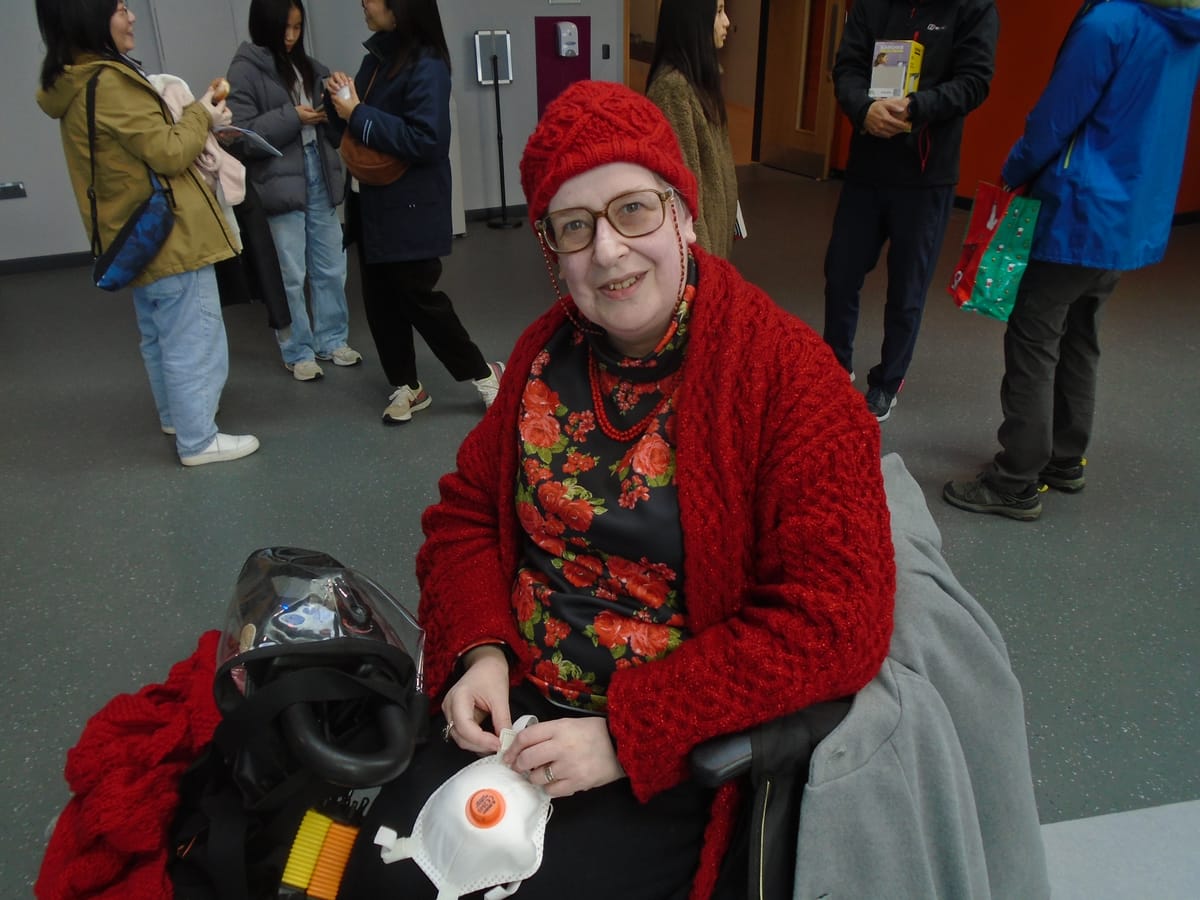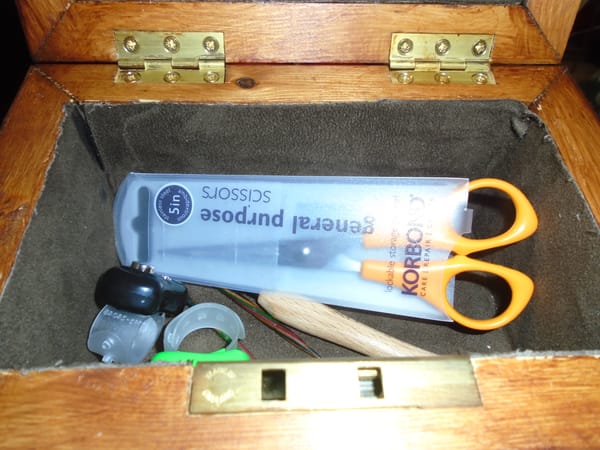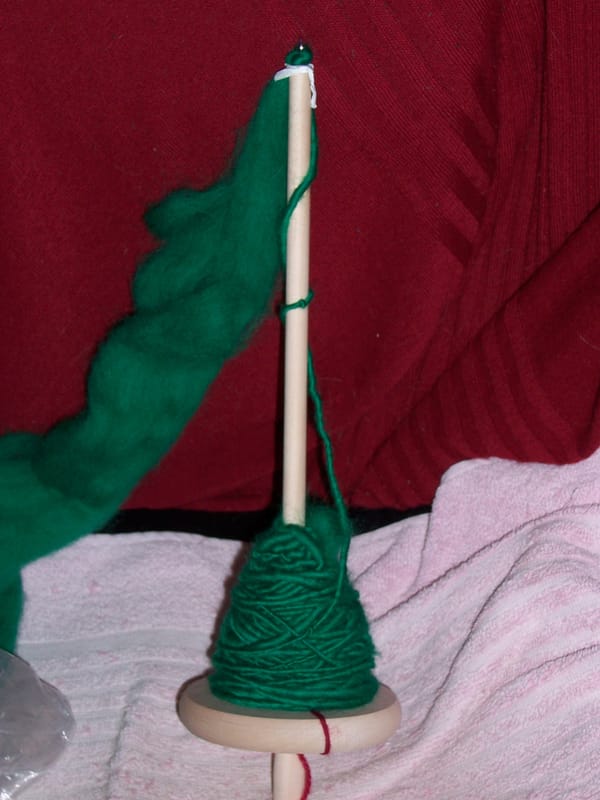Sewing for every body

I was originally planning to post about something else today, but you'll get that tomorrow now instead. Yesterday morning I had a very nice chat on Mastodon with someone else who sews her own clothes; and while she does, like me, also have a non-average figure, one of the main reasons she sews is that she has a set of disabilities (not the same as mine). This includes a broken bone that didn't heal properly, so she now has a different shape on one side from the other. And one of the things she said really struck me. What she said, in essence, was that there's really no unified resource out there for people in our position. You are, and I quote, relying on "blogs and hearsay".
Well, there ought to be, and I'm more than happy to start collating it; I may be physically limited these days, but I probably have more mental energy than I did in my 20s (probably to compensate). It would, obviously, have to be a very large and well-indexed resource, because there are just so many different ways that various disabilities can affect one's sewing needs, and not always in ways that are immediately obvious if you don't have that disability yourself. My evil little Sibyl is a very good example. Anyone could easily look at me and see that I need fitting adjustments because of her; it's basically a full abdomen adjustment, technically needed only on one side, though I do tend to adjust both sides to balance as I don't like her to stand out. But they wouldn't see the other major effect that she has on the way I dress.
Stomas are prone to leak. Some are worse than others, and ileostomies (on average) are far worse than colostomies; I once read an article written by a lady with an ileostomy, and when I discovered she was able to go swimming with it, my eyes almost popped out of my head. She was extremely fortunate. I certainly wouldn't go swimming with Sibyl (even if I could swim, which I can't; I'm one of those people who sink like a stone). But they're all prone to doing it at some point, which is why I wear a pad over Sibyl. And Sibyl can spring a leak astonishingly fast. Occasionally it is just a kit failure, and there's not a blessed thing anyone can do about that, but what generally happens is that the Sibyllage (to coin a word) forces its way under the base plate and, at best, starts leaking out at the side. At worst it can pretty much blow the base plate off altogether, and Sidney used to do that with disturbing frequency. I do apologise for this, as it is all rather gross, but I'm telling you so that you understand why Sibyl needs rapid emergency access. I can't wear a dress or a jumpsuit, at least not unless I build a hidden opening into it on the left side of the midriff; and, though I really prefer to wear formal trousers with a zip front, those are out too. If Sibyl feels as if something is wrong, I do not always have time to mess about with a zip. I need elastic or a drawstring at the waist so I can check her out straight away and act accordingly.
And this is exactly why I wouldn't presume to try to work out what adjustments need to be made for disabilities I don't have; I'll almost certainly be able to find some of them, but not all, and the ones I don't find are likely to be at least as important as the ones I do. What I need to be doing is talking to people with a whole range of disabilities who sew, or who would ideally like to sew, because they can't (or can't easily) get ready-to-wear clothing that works for them.
I'm not simply referring to physical disabilities here. Someone may, for instance, have concentration problems due to something like long COVID; that person may want to be able to sew simply because they have a non-average figure, but have difficulty following a regular sewing pattern. That kind of thing also needs to be addressed. The lady I was talking to finds it easier to cut both sides of her garment the same and then seam them differently, rather than cutting them differently to begin with, because then it doesn't matter if she mixes up the pieces (so I'm guessing that, like me, she mainly prefers to use plain fabrics). And, of course, simply cutting out is an issue for a lot of people, me included; I can do it in short bursts because I can stand up for a short time, but some people can't stand up at all. I know one wheelchair-bound stitcher whose husband does the cutting out for her. Not having a husband at the moment, I'm very glad I'm not in that position; and even when I did have one, he would not have been a great deal of help cutting out, even if he'd wanted to be, since he was blind.
That, of course, is something else again. One might simply think "well, blind people can't sew anyway"; but in fact some of them can, to varying extents. I once read about a young woman who was totally blind but nonetheless managed to learn to tack quite well. Also, it is worth remembering that "legally blind" doesn't always mean "totally unable to see". I used to know a lovely old Irishman who was legally blind, and used a white cane, but what he actually had was extremely restricted tunnel vision; so he could still see a tiny area immediately in front of him, and he put this to very good use by painting beautiful icons for his local (obviously Catholic) church. I don't know if he ever did any sewing, but he certainly could have done if he'd been so minded.
So, what I did in the end was to contact Jenny Rushmore from Cashmerette, who runs a sewing club specifically for curvy people (I would join it like a shot if they'd only send me paper patterns, but all the free patterns that come with the membership are PDFs, and it costs about as much to have them printed and sent to you as it does just to buy a paper pattern, so it's not really worth it for me), and see if she had any helpful suggestions. I reckoned that if you can have sewing for curves, you can surely have sewing for wheelchairs, and stomas, and odd body shapes due to physical damage/deformity, and mental problems which make it harder to follow a pattern, and fatigue, and... and...
...and she replied, surprisingly quickly, and put me on to Sew Enabled, which looks like exactly what I'm after - or, at any rate, the core of it. So I've applied to join the team. The existing team seems to have a preponderance of fatigue and related issues, and there isn't anyone with a stoma; so I suspect they'll be able to make good use of someone with a different kind of disability and a great deal of mental energy. I hope so, anyway. I've also set up a Mastodon group for stitchers (and crafters in general) with disabilities, having found out how to do that now.
I am still very cut up about the whole Makin Report thing; but I'll think about it less if I can make myself useful.




